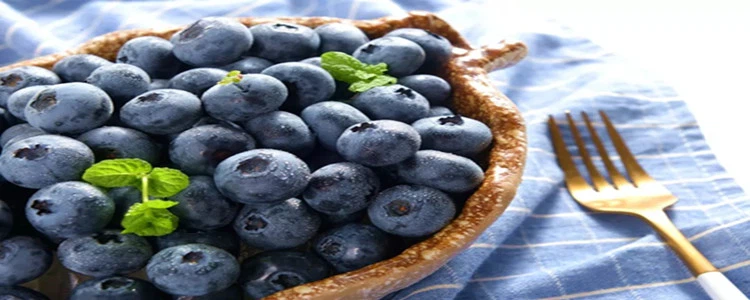What is Anthocyanin
Anthocyanin is a kind of water-soluble natural pigment widely existing in plants in nature. It is a colored aglycone obtained from the hydrolysis of anthocyanins. Most of the major chromogenic substances in fruits, vegetables, and flowers are related to them. Under the condition of different PH values of plant cell vacuoles, anthocyanins make petals appear colorful. It is known that there are more than 20 kinds of anthocyanins, among which 6 are important, namely geranium pigment, cornflower pigment, delphinium pigment, peony pigment, morning glory pigment, and mallow pigment. Anthocyanins in the natural state exist in the form of glycosides, called anthocyanins, and few free anthocyanins exist. Anthocyanins are mainly used in food coloring, as well as in dyes, medicine, cosmetics, etc.

Main biological sources
Anthocyanin is widely found in flowering plants (angiosperms), and their contents in plants vary greatly with varieties, seasons, climates, maturity, etc. [5] According to preliminary statistics, anthocyanins are contained in 27 families and 73 genera, such as purple sweet potato, grape, blood orange, red cabbage, blueberry, eggplant, cherry, red berry, strawberry, mulberry, hawthorn, morning glory and other plants.
The earliest and most abundant anthocyanin is the red pigment of grape skin extracted from red grape residue, which was listed in Italy in 1879. The pigment can be extracted from grape residue, the waste of wine distilleries. Elderberries contain a large amount of anthocyanins, which are all cyanidins, with a fresh weight of 200-1000 mg per 100 grams. In addition, anthocyanins are also widely found in barley, sorghum, legumes, and other food crops. It was found that the anthocyanin content of grape seed and pine bark extracts was the highest.
Extraction method
1. Solvent extraction method
Solvent extraction is the conventional extraction method for anthocyanins. Methanol, ethanol, acetone, water, or mixed solvents are preferred. In order to prevent the degradation of non-acylated anthocyanins in the extraction process, a certain concentration of hydrochloric acid or formic acid is often added to the extraction solvent, but these acids will cause partial or total hydrolysis of acylated anthocyanins during evaporation and concentration. In addition, organic solvents such as n-hexane, petroleum ether, ether, etc. should be used to extract samples that may contain fat-soluble components. The traditional solvent extraction method takes a long time to extract and has a low production efficiency, and the thermal solvent is easy to causes the degradation of anthocyanins and reduces the physiological activity.
2. Pressurized solvent extraction
Pressurized solvent extraction, also known as pressurized liquid extraction (PLE) and accelerated solvent extraction (ASE), increases the boiling point of solvent through external pressure, thereby increasing the solubility of substances in solvent and extraction efficiency.
The extraction of functional components in food by PSE technology mainly focuses on the research of flavonoids, phenols, and other antioxidant-active components. This technology has also been reported in the extraction of anthocyanins. The optimum extraction process of anthocyanins from purple cabbage was optimized by using this technology. The optimum parameters were: sample 215g, temperature 99 ℃, extraction time 7 min, solvent V (water): V (ethanol): V (methanol)=94:5:1.
3. Aqueous solution extraction method
The anthocyanins extracted by organic solvents have toxic residues and environmental pollution in the production process. In view of this, aqueous solution extraction came into being. Generally, plant materials are soaked in hot water under normal or high pressure, and then absorbed by non-polar macroporous resin; Or directly use deoxygenated hot water for extraction, and then use ultrafiltration or reverse osmosis to concentrate to obtain crude extract.
4. Microbial fermentation extraction method
This method applies biological fermentation technology to the extraction of anthocyanins, which is a super-penetration and effective combination of biological science and chemical production. The microbial fermentation method uses microorganisms or enzymes to degrade and separate the cell wall containing anthocyanins, so that the anthocyanins in the cell can be fully dissolved into the extract, thus increasing the yield and rate of extraction.
5. Other extraction methods
It includes high voltage pulsed electric field assisted extraction, aqueous two-phase extraction, and ultra-high pressure assisted extraction. The first two can be applied to the extraction of proteins, nucleic acids, and polysaccharides, while the ultra-high pressure assisted extraction has been successfully applied to the extraction of anthocyanins from grapes. The comparison shows that the efficiency of high-pressure assisted extraction of anthocyanins and other polyphenols can be improved by nearly 50%.
Range of application
1. Anti-oxidation and free radical scavenging function
Anthocyanins belong to biological flavonoids, and the main physiological activity of flavonoids is free radical scavenging capacity and antioxidant capacity. Studies have proved that anthocyanin is the most effective antioxidant and the most effective free radical scavenger found by mankind today. The antioxidant performance of anthocyanin is 50 times higher than VE and 20 times higher than VC. Purple sweet potato anthocyanin products have scavenging and inhibitory effects on active oxygen species such as OH, H2O2, etc., especially on OH, which is stronger than ascorbic acid, and the scavenging effect is dose-dependent.
2. Anti-mutation function
The function of anthocyanins is not only to make plants show colorful colors but also to have active molecules that can reduce enzyme activity, resist mutation, and other health functions. The research shows that the extract with a certain concentration of anthocyanins can effectively prevent cancer at different stages, but the individual role of anthocyanins is uncertain, partly because anthocyanins are easy to degrade after being separated from other stable components such as phenols and bioassay.
3. Application in food
With the development of science and technology, people pay more and more attention to the safety of food additives. The development and utilization of natural additives have become the general trend of the development and use of additives. Anthocyanidins can not only be used as nutritional fortifiers in food, but also as food preservatives to replace benzoic acid and other synthetic preservatives, and can be used as food colorants in ordinary beverages and food, which meets the general requirements of people for natural, safe and healthy food additives.



